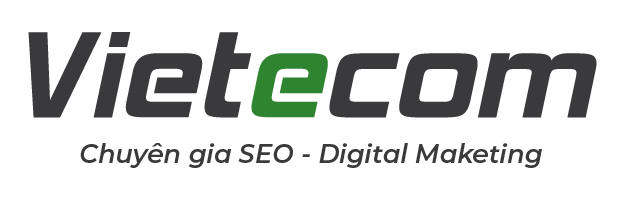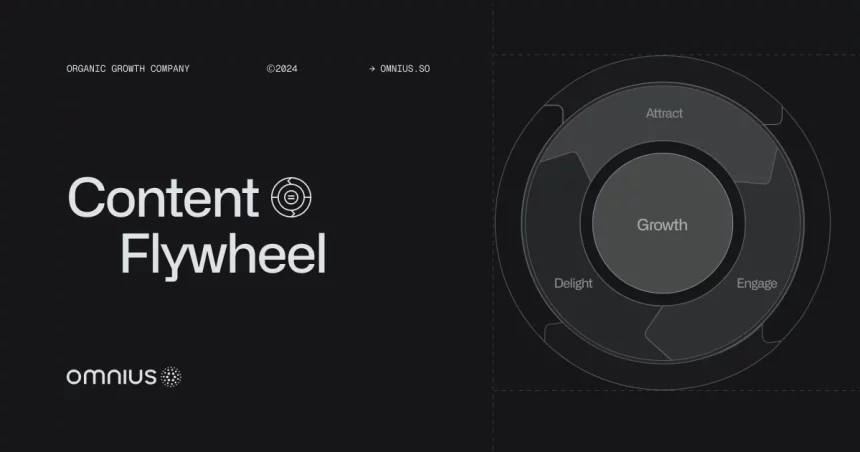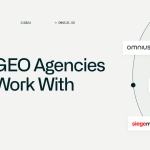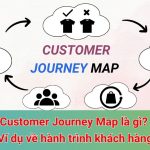The content flywheel is a powerful strategy that helps businesses generate consistent growth by leveraging momentum from well-planned, coordinated content.
Yet, despite its immense potential, many marketers fail to adopt it due to misconceptions about its complexity or lack of a clear roadmap.
The truth is, building a content flywheel is far easier than it seems, especially when you break it down into clear, actionable steps that anyone can follow.
In this article, you will learn how to create an effective content flywheel to amplify your marketing efforts and drive sustainable success.
What is Content Flywheel?
The content flywheel model is a strategy where each piece of content you create builds on the success of the previous ones, fueling growth and momentum.
Much like a flywheel gains speed as it spins, a content flywheel thrives on the energy of earlier efforts, creating a self-sustaining cycle of content production.
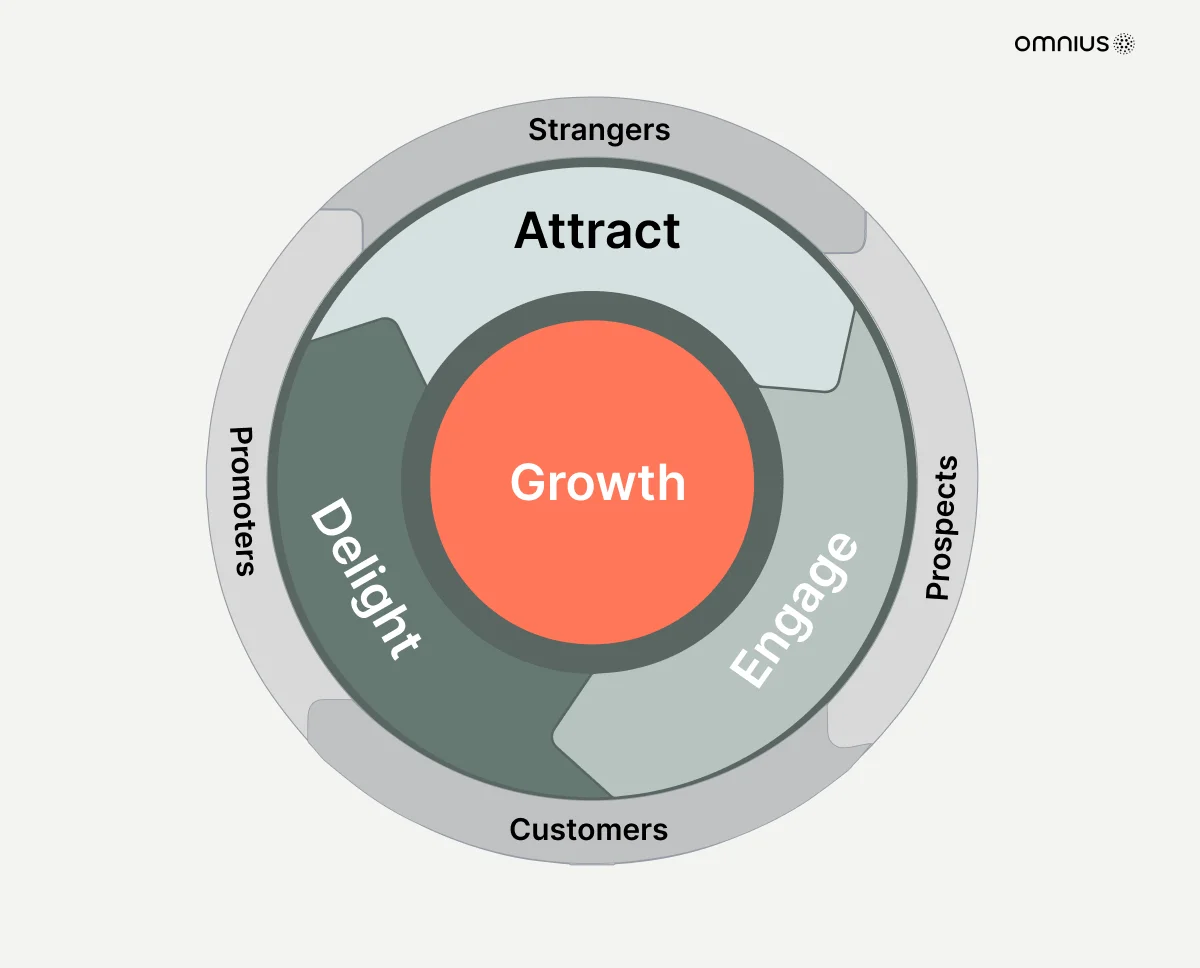
This approach focuses on reusing, repurposing, and redistributing high-quality content across multiple channels with the goal to:
- Maximize reach
- Boost engagement
- Strengthen brand recognition
- Drive business growth
What are the Stages of Content Flywheel?
The content flywheel operates through four key stages: attract, engage, delight, and analyze. Each step ensures your content continues to spin the wheel, keeping the momentum going.
Stage 1: Attract
This stage is all about creating content that grabs attention and informs your audience.
Think of original research, downloadable guides, or interactive digital events – anything that sparks curiosity and adds value.
For example, you can publish a data-driven report on industry trends or host a webinar to share expert insights.
Stage 2: Engage
Great content isn’t just informative; it’s immersive.
Today’s audience expects a seamless, engaging experience like scrolling through streaming platforms or social media.
For example, an interactive quiz on a brand’s website or a short, captivating video on social media can draw audiences in and keep them interested.
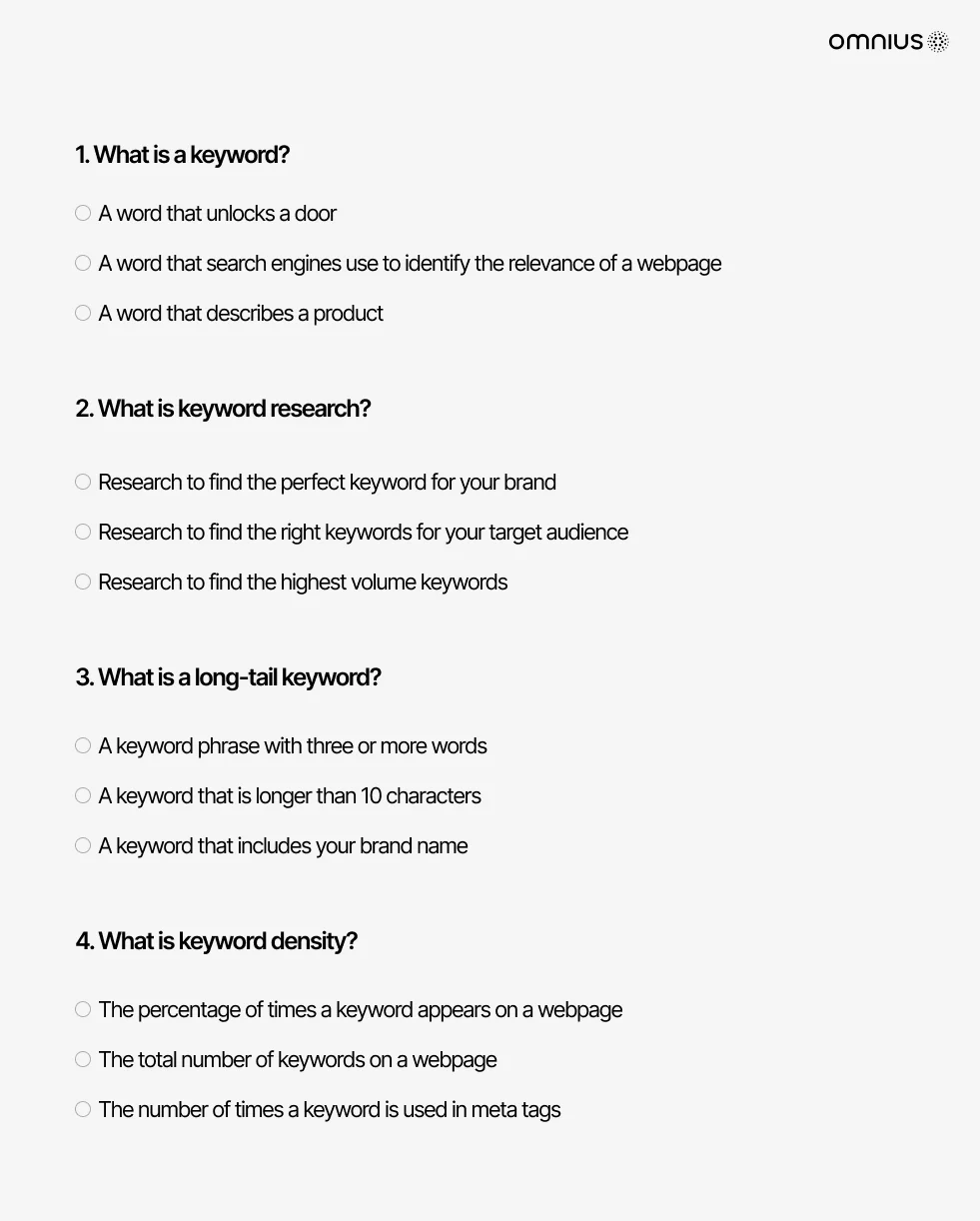
Stage 3: Delight
By delivering customer-focused insights in diverse formats, brands can stand out in a crowded market.
This step builds loyalty and strengthens connections with your audience by providing exceptional content experiences.
For example, you create a series of customer success stories in video and blog formats to showcase how it solves problems.
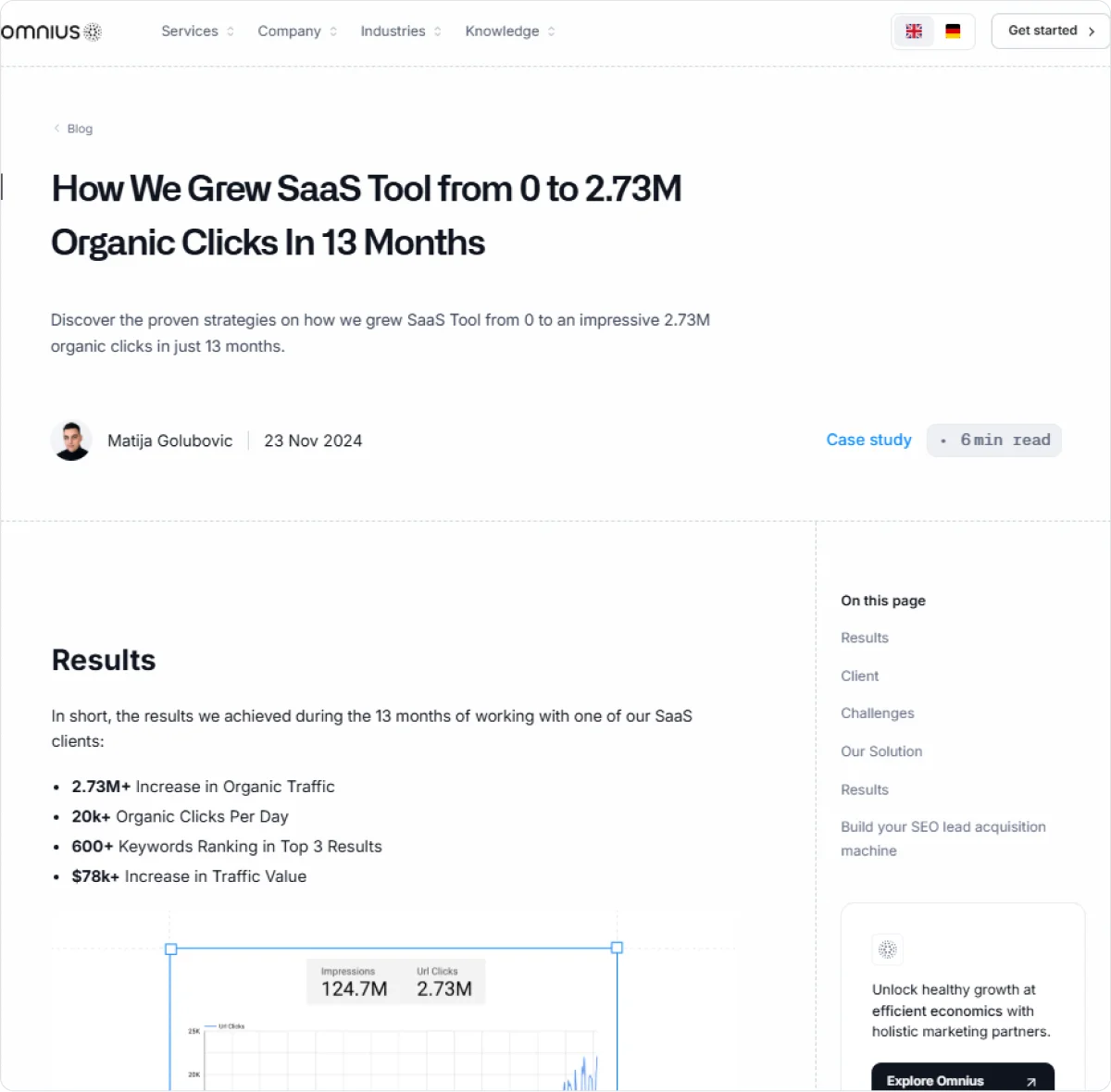
Stage 4: Analyze
To keep the flywheel turning effectively, tracking the right metrics is key.
Use data to identify which content performs best so you can focus on what resonates most with your audience.
Tools like Google Analytics, Google Search Console, and PostHog can help you track these metrics.
For example, by tracking which blog posts drive the most conversions or which videos have the highest watch time, a brand can focus on producing more of that type of content.
7 Effective Tips to Get Your Content Flywheel Spinning
1. Identify the Steps in Your Customer Journey
To start, outline all the stages of your customer journey.
Your flywheel can follow a simple framework like the Attraction, Interest, and Desire (AID) model or a more detailed one, such as the Attention, Consideration, Interest, Purchase, and Retention model.
This process helps pinpoint the different components of your flywheel and highlights which stages have the most significant impact on business growth.
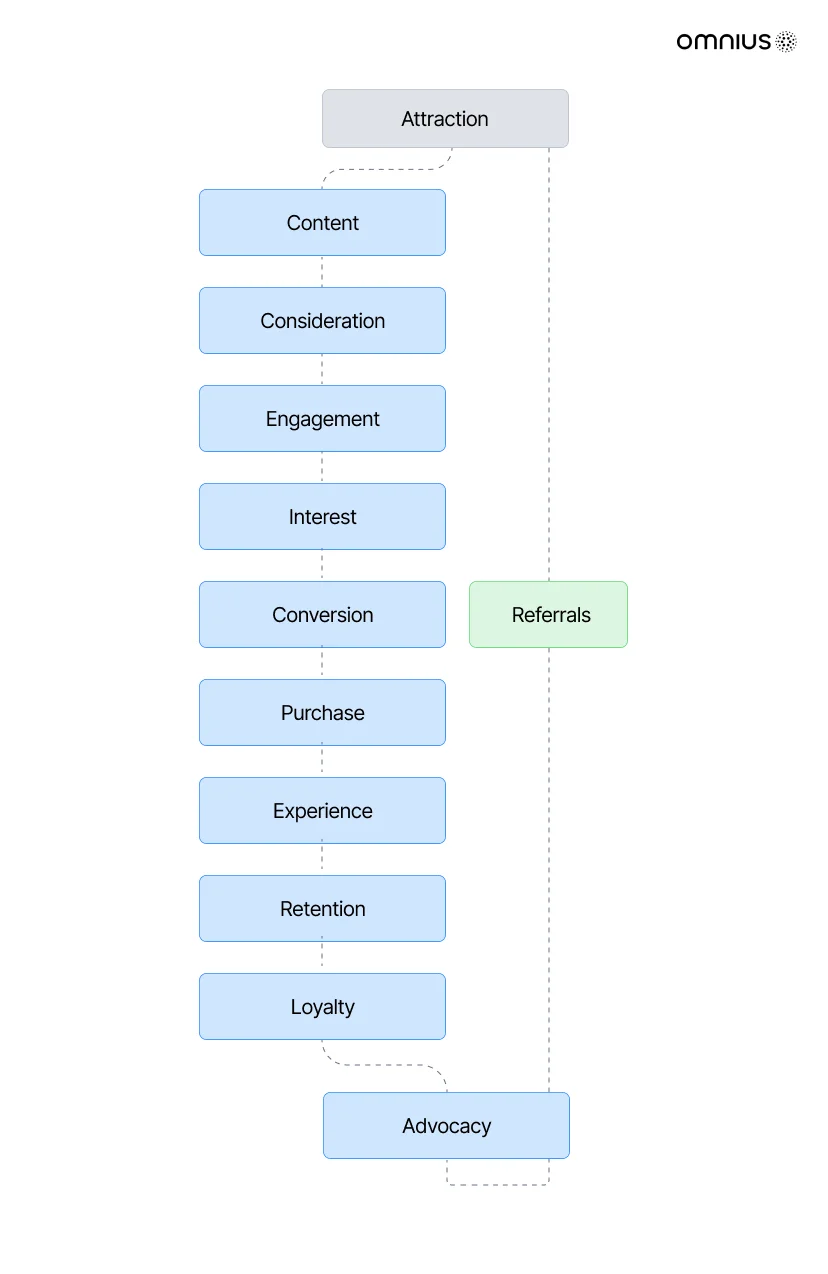
By keeping the stages distinct to avoid overlap and confusion and focusing on high-impact areas, you can optimize your flywheel for better results.
Here’s an example of how you might map out a flywheel:
- Attraction – Draw in potential customers using strategies like content marketing, free tools, free templates, calculators, and social media campaigns to provide immediate value and educate your audience.
- Consideration – Provide resources like case studies, free trials, and demo videos to help potential customers evaluate your product as a solution to their needs.
- Interest – Nurture relationships with personalized emails, tailored solutions, and live demonstrations to build trust and address specific customer pain points.
- Purchase – Ensure a smooth conversion process with intuitive onboarding, transparent pricing, and limited-time offers to address final concerns and encourage action.
- Retention – Engage customers post-purchase with proactive support, exclusive features, and regular updates to foster loyalty and long-term satisfaction.
- Advocacy – Turn satisfied customers into advocates by encouraging reviews, referrals, and participation in testimonials or success stories through rewards programs.
2. Decide the Scale and Size of Your Flywheel
Determining the size of your flywheel is a crucial step in building an effective content marketing strategy.
The size impacts how much effort will be required to get it moving and sustain its momentum.
A larger flywheel has the potential to drive greater business growth, but it also demands more resources to be effective.
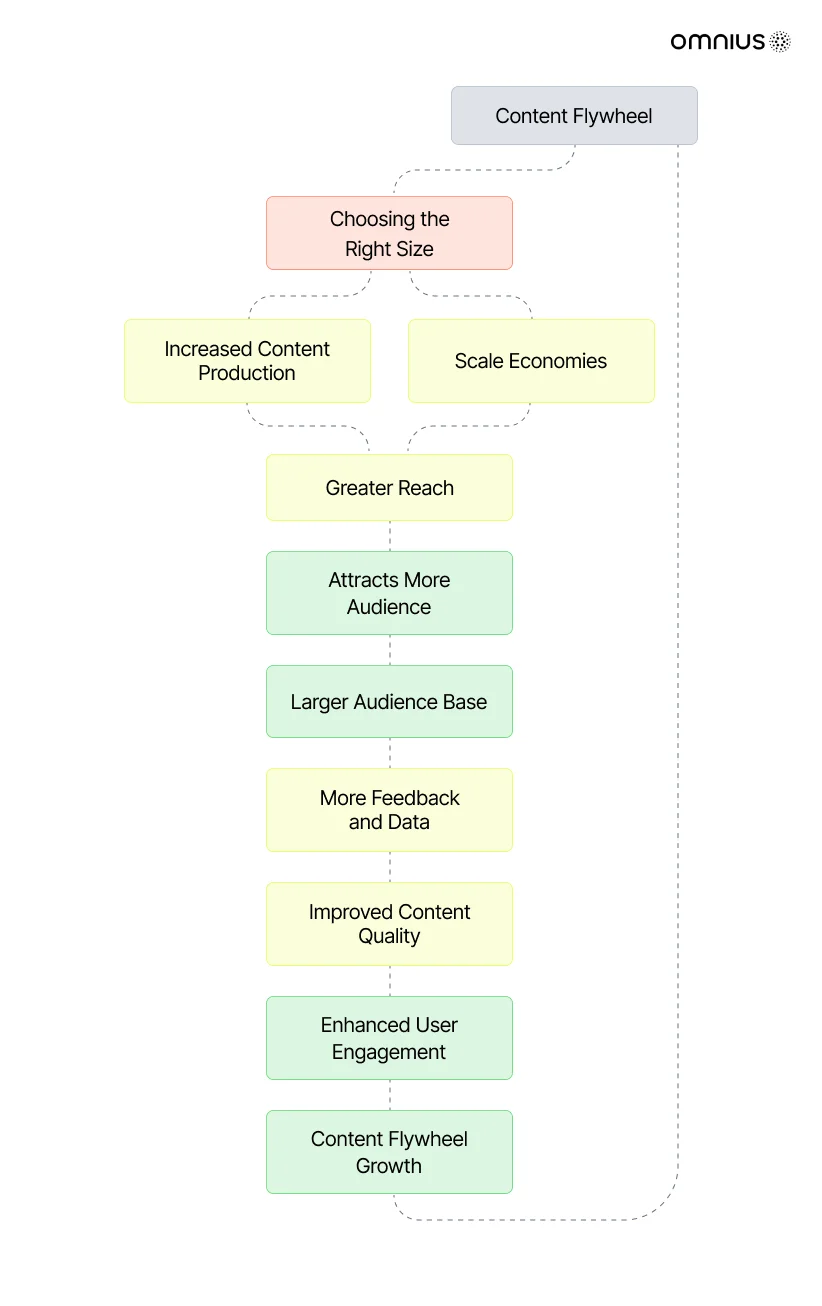
That said, bigger isn’t always better. If your flywheel is too large for your marketing budget or capacity, it can lead to wasted time and negative ROI.
To avoid this, choose a flywheel size that aligns with your available resources and long-term goals.
This balanced approach will ensure your content marketing strategy is both impactful and sustainable.
3. Create Engaging Content to Spark Interest
At this stage, prospects start seeing your product as a potential solution to their challenges.
Your content should highlight your business’s unique selling proposition (USP) while helping customers explore the best solution to their problems.
However, keep in mind that any landing pages or forms offering this content should require minimal information from the customer.
Because customer interest is still fragile at this stage, it is essential to minimize any barriers or “friction” in their experience.
A helpful tip is to ensure your content delivers quick, valuable insights that are easy to digest.
To engage effectively, use content formats like:
Ebooks
Ebooks provide in-depth information on a specific topic, helping prospects better understand their problems and how your product can solve them.
They are ideal for breaking down complex challenges into manageable insights that guide decision-making.
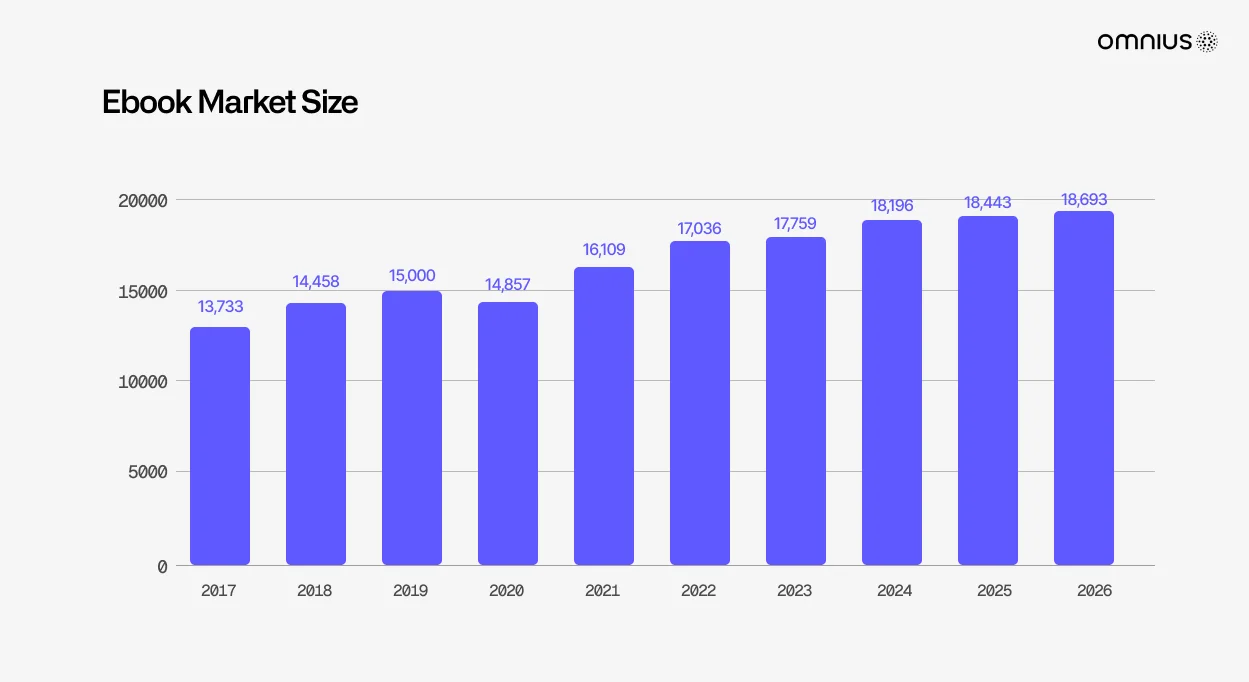
An ebook like “The Ultimate Guide to Reducing Operational Costs” could naturally position your product as a cost-effective solution while educating the reader on practical strategies.
Tip Sheets
Tip sheets offer quick, actionable advice that helps prospects address a pain point with minimal effort.
These bite-sized resources are perfect for busy professionals looking for immediate value.
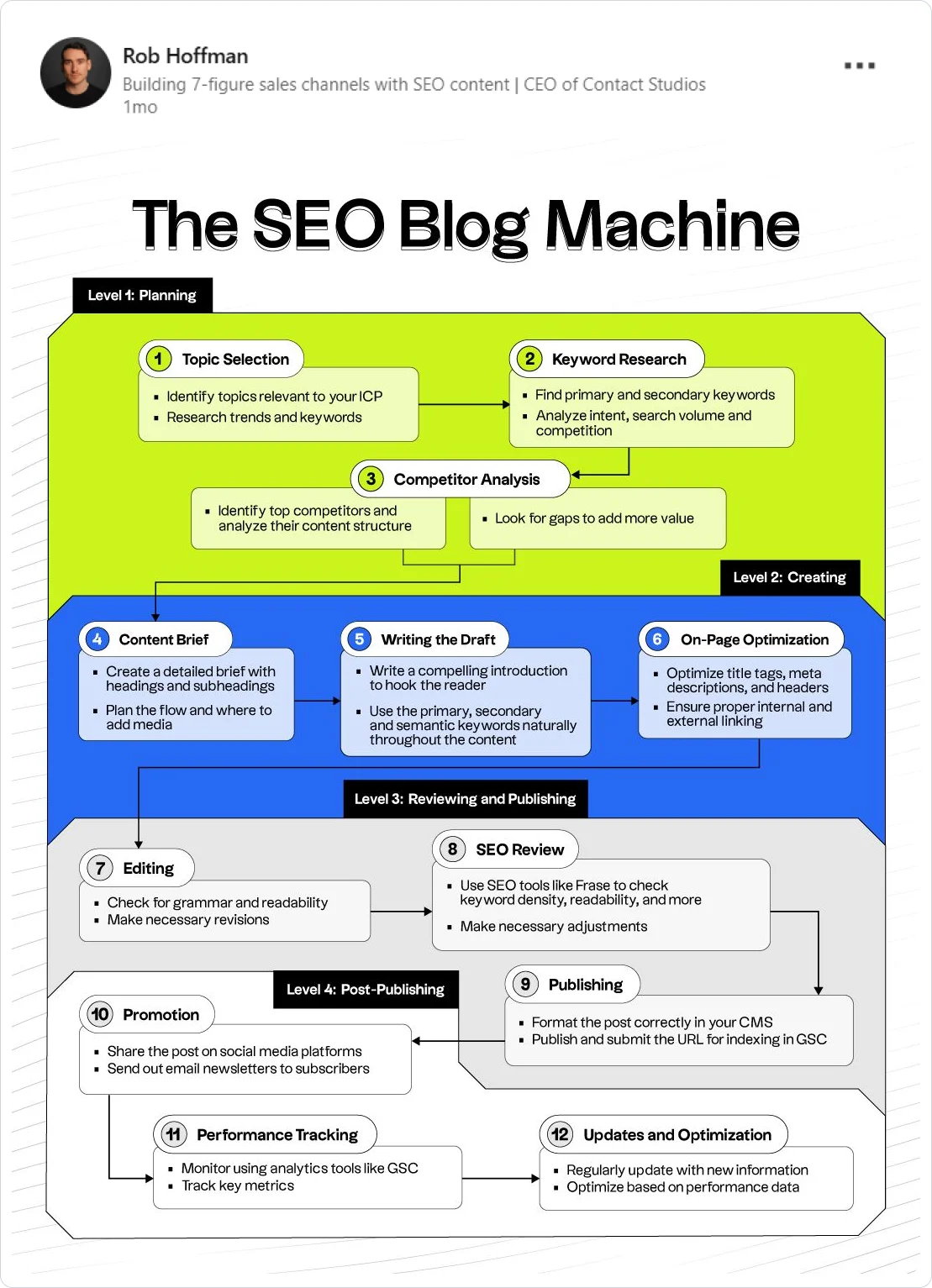
A “5 Easy Ways to Boost Productivity at Work” tip sheet might include simple strategies that seamlessly connect to your product’s features, reinforcing its relevance.
Gated Blog Posts
Gated blog posts require users to provide basic information to access exclusive, high-value content(e.g., a checklist sent via email or lead magnet).
These posts entice readers by promising valuable insights they won’t find elsewhere, building trust while capturing leads.
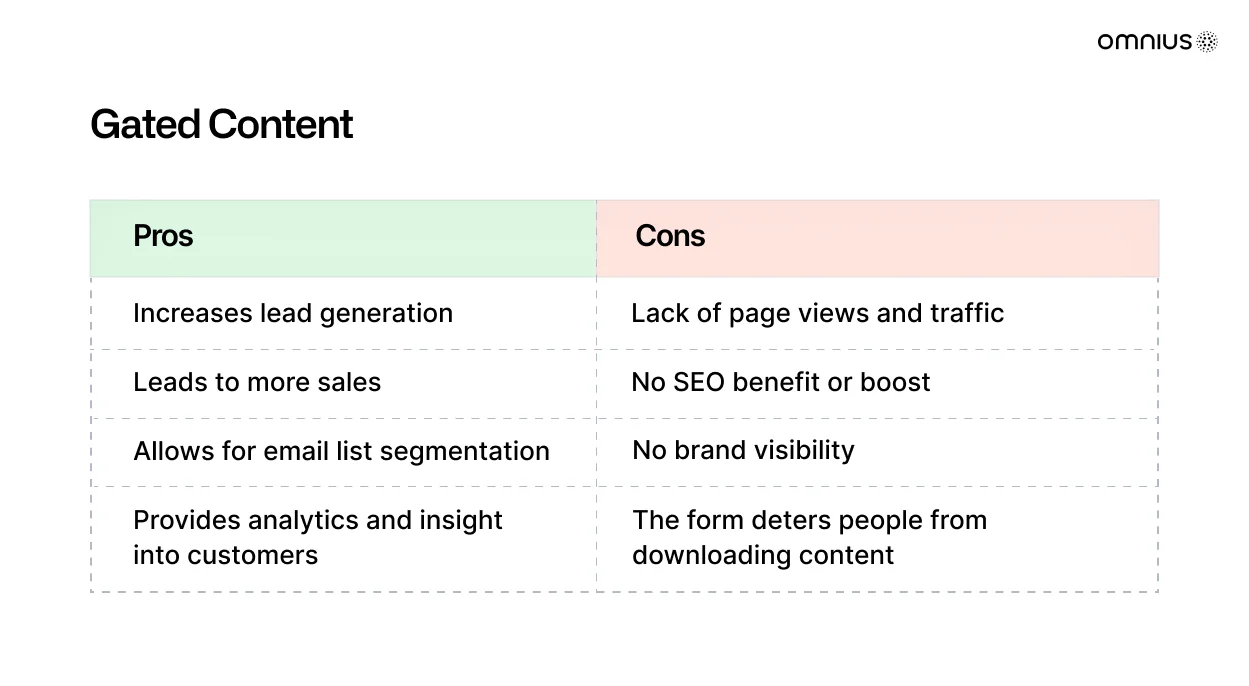
A PDF report such as “Top 10 Industry Trends You Need to Know” could deliver exclusive data that showcases your expertise while encouraging engagement with your brand.
Guides
Guides walk prospects through solving a problem step-by-step, offering valuable support and clarity.
They effectively showcase your product as a practical, user-friendly solution.
For instance, a guide titled “How to Set Up a Marketing Funnel in 7 Simple Steps” could demonstrate how your tool simplifies the entire process, making it accessible even to beginners.
Manuals
Manuals provide detailed instructions or technical knowledge, making complex tasks more accessible for the user.
They are especially helpful for onboarding customers or introducing new features.

A manual like “The Small Business Accounting Setup Manual” could emphasize your product’s user-friendly design, helping users get started without frustration.
4. Make Your Strategy More Persuasive
At this stage, your prospects are familiar with your brand and regularly engage with your content.
Now, the focus shifts to guiding them closer to making a purchase.
The goal is to create content that subtly builds trust, sparks delight, and fosters a subconscious preference for your brand.
The most effective content types include:
- Videos
- Case studies
- Webinars
- Whitepapers
Creating this type of content demonstrates your brand’s reliability and expertise, building customer trust.
Videos
Videos are an engaging way to showcase your product’s value while building an emotional connection with prospects.
A short, impactful video featuring real-life customer success stories or product demonstrations can make your offering memorable.
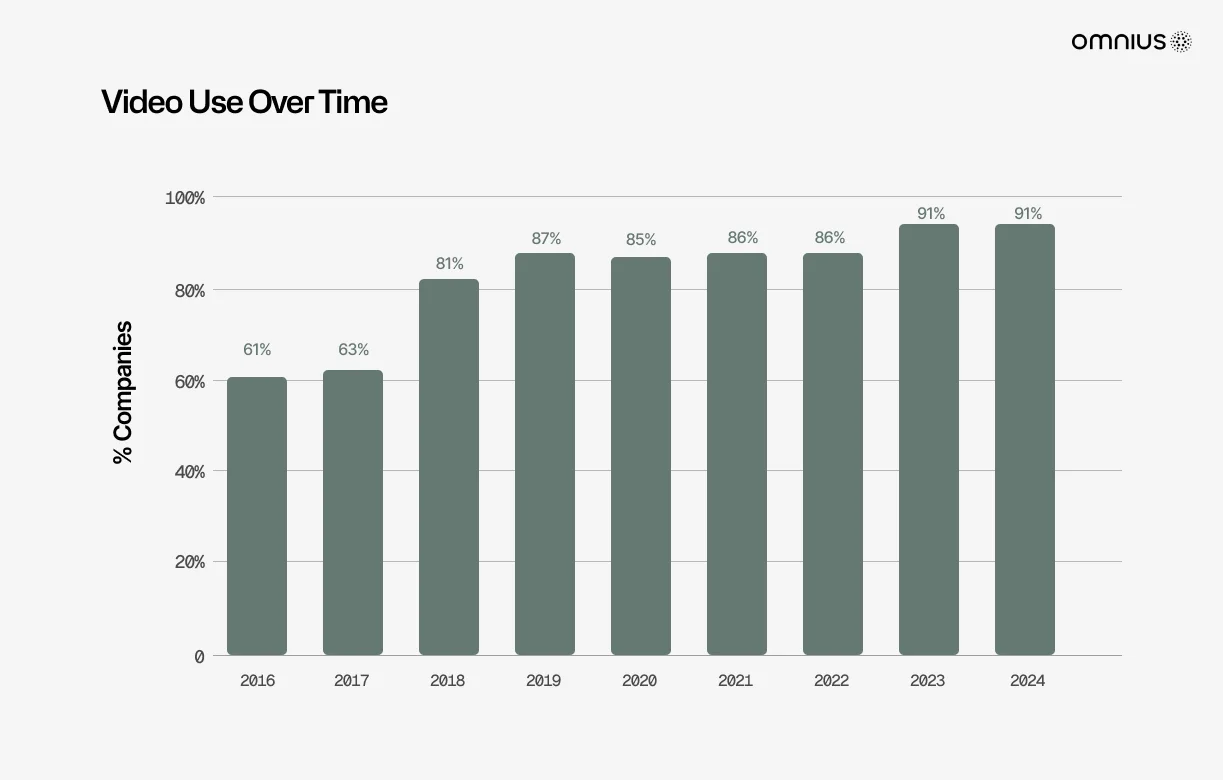
For example, a clip showing how a small business doubled its productivity using your software can resonate deeply with viewers.
Case Studies
Case studies provide real-world proof of how your product has helped others, building trust and credibility.
These detailed stories highlight measurable results and specific success scenarios.
Here are some examples of Omnius case studies:
Webinars
Webinars allow you to connect directly with prospects, offering in-depth knowledge and answering their questions in real-time.
They’re ideal for building relationships and showcasing expertise.
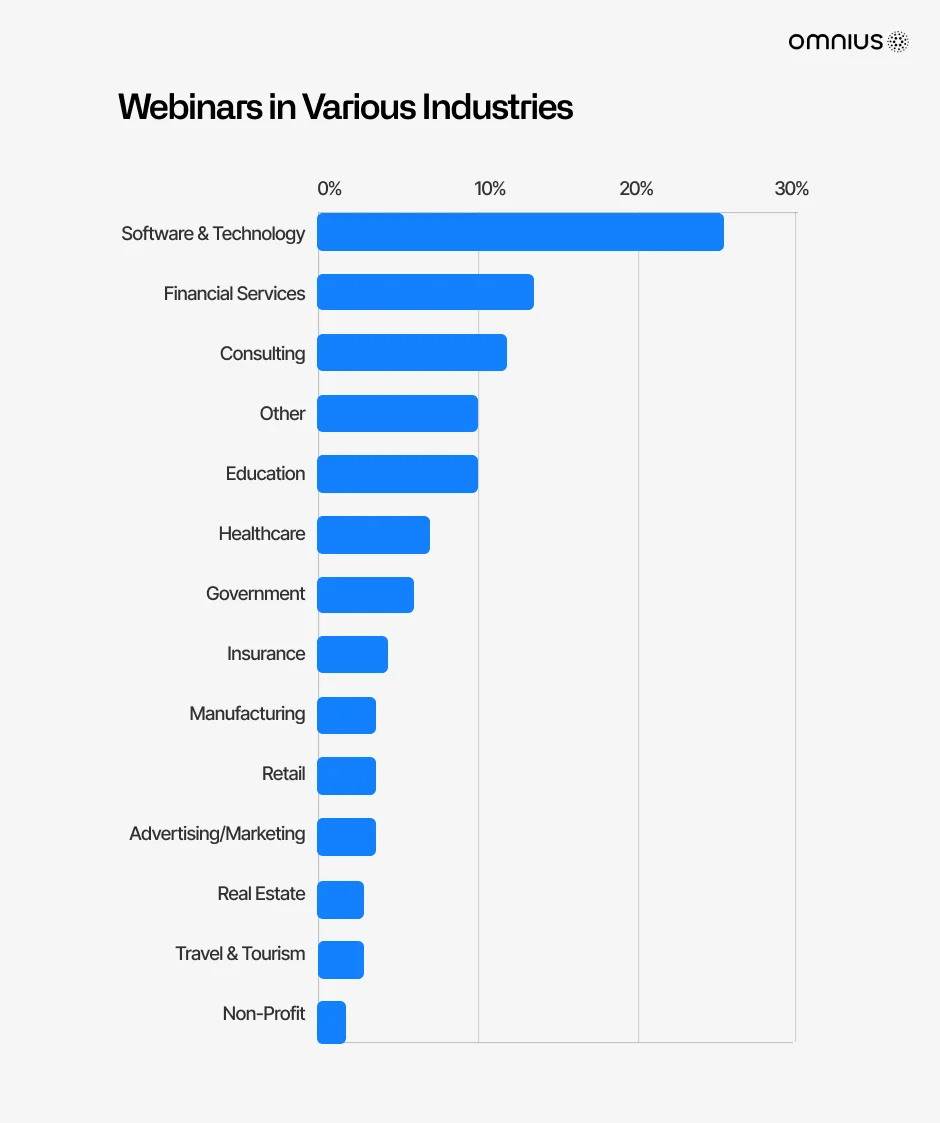
A webinar titled “How to Streamline Your Marketing Workflow” could demonstrate your product’s capabilities while providing practical tips.
Whitepapers
Whitepapers deliver well-researched, authoritative insights on industry challenges and solutions, appealing to prospects who seek data-driven content.
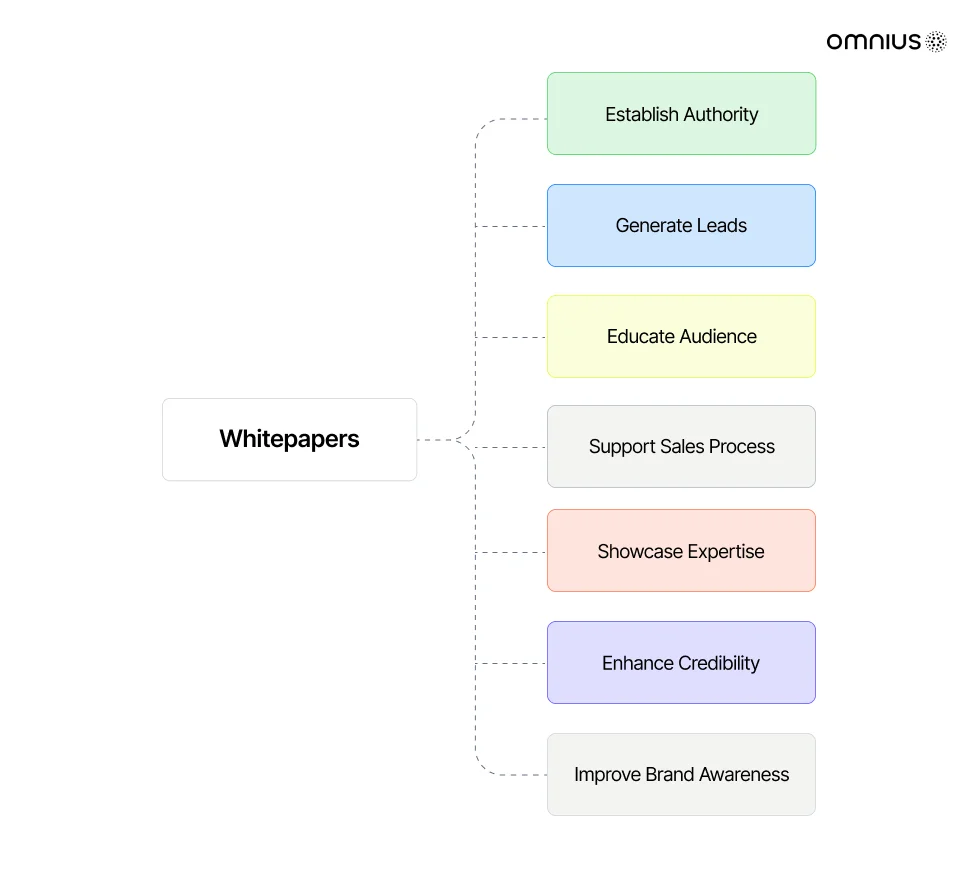
A whitepaper titled “The Future of Automation: Trends and Tools for Success” can position your brand as a thought leader while subtly tying in your product as part of the solution.
Industry Reports
Industry reports offer detailed analysis and trends, helping prospects stay informed while showcasing your expertise.
These reports can establish your brand as a go-to resource for reliable information.
For example, here you can see how we created industry trend reports:
5. Amplify Your Content Through Repurposing and Promotion
Creating great content is only part of the equation; amplifying it effectively ensures it reaches a broader audience and drives more value.
Repurposing and promoting your content can help you maximize your efforts while keeping your flywheel spinning.
Repurpose Your Content
According to a recent survey, 46% of marketers find repurposing content more effective than starting from scratch with brand-new content.
Repurposing allows you to extend the lifespan of your content and reach different audience segments.
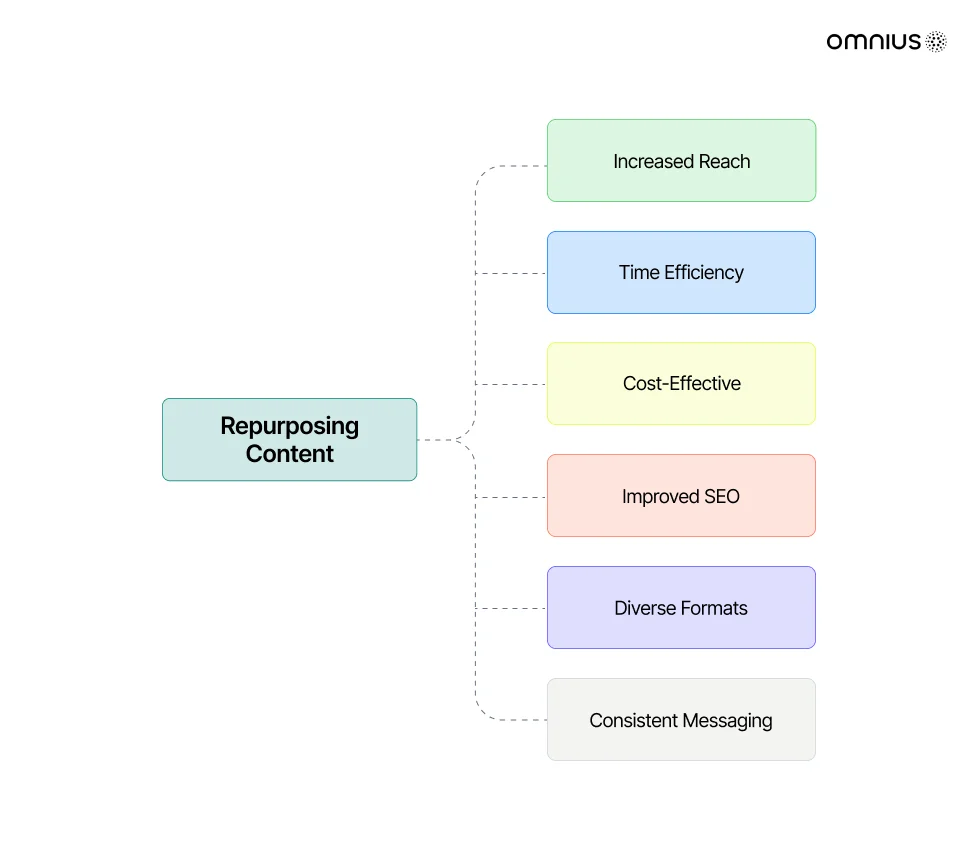
Take a high-performing piece of content and adapt it into various formats to suit multiple platforms. For example, you can:
- Turn a blog post into a podcast episode or webinar.
- Transform a webinar into short social media videos.
- Create infographics or slideshows based on a whitepaper or report.
- Use customer feedback to update and enhance existing content with new insights.
This approach not only saves time but also ensures that your audience encounters your message in the format they prefer.
Promote Your Content
Did you know that 82% of marketers actively invest in content marketing?
Strategic promotion is key to moving your flywheel by leveraging multiple channels to expand your reach.
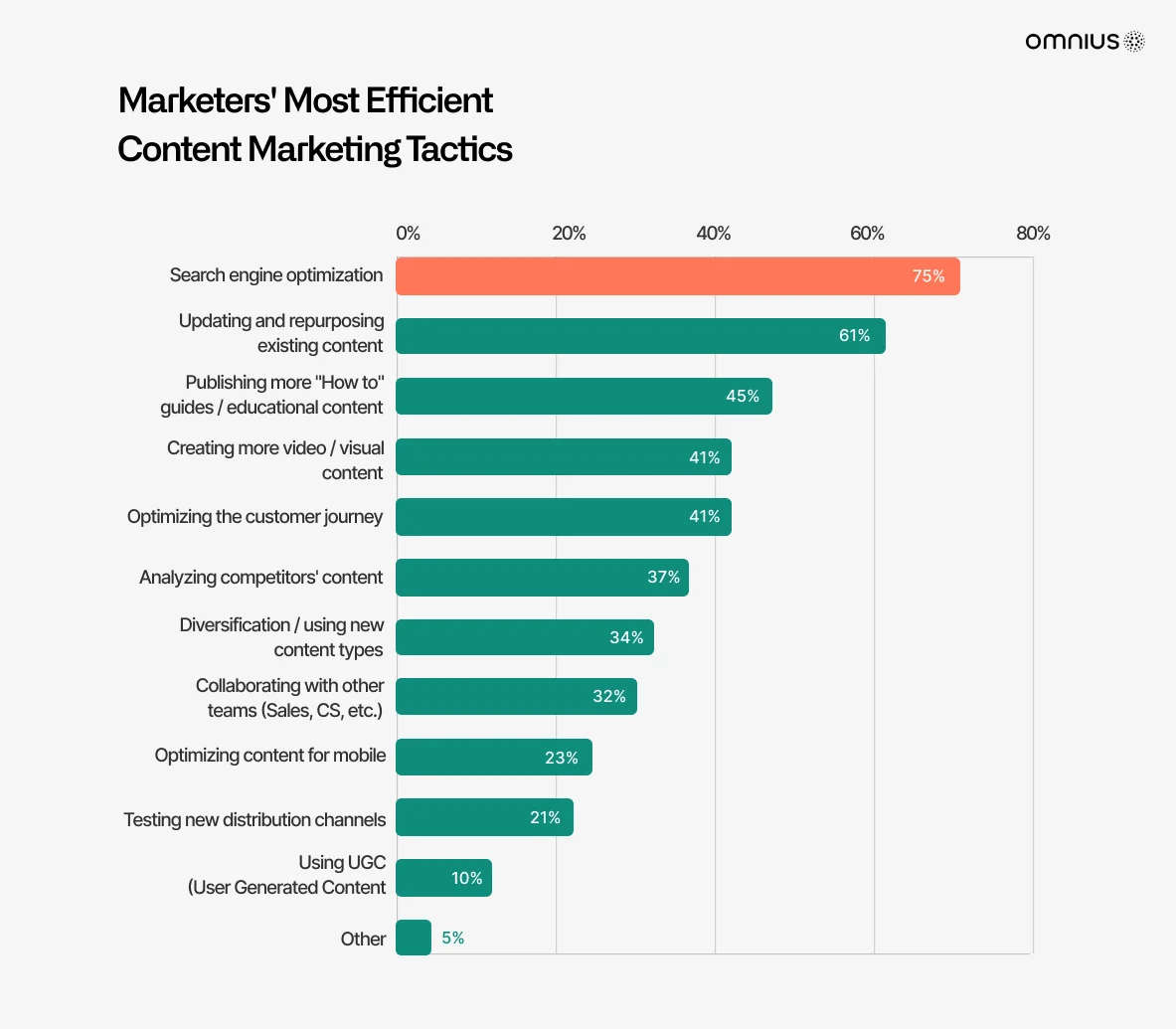
Here is how you can do it:
- Social media – Share your content across platforms like LinkedIn, Twitter, and Instagram, tailoring the message to fit the tone and audience of each.
- Email marketing – Distribute content to your mailing list with personalized recommendations.
You can Send a newsletter to your subscribers highlighting a new case study relevant to their industry with a personalized subject line such as “See How Businesses Like Yours Are Growing.”
- Paid campaigns – Invest in targeted ads to promote high-value resources such as guides, reports, or webinars.
For example, run a Facebook ad promoting a free downloadable guide, targeting users interested in similar topics or tools.
- Collaborations – Partner with influencers or other businesses to cross-promote your content to a broader audience.
6. Minimize Friction to Keep Your Flywheel Moving
Friction in your flywheel can slow down conversions and waste valuable resources.
By reducing friction, you can keep the flywheel running smoothly and sustain its momentum over time.
Friction can come from both internal and external sources:
- Internal issues might include poor team performance, outdated technology, miscommunication, or lack of management support.
- External challenges could involve negative customer reviews, uncooperative partners, industry downturns, or unexpected events like a pandemic.
While some level of friction is necessary for movement, the key is to ensure it doesn’t hinder growth.
Here is what you need to focus on to avoid disruptions and maintain a seamless customer experience:
Strengthen Internal Communication
Strengthening internal communication ensures everyone is on the same page, reducing misunderstandings and delays in work.
You can use tools like Slack, Microsoft Teams, or Asana to keep your team connected and organized.
Scheduling regular check-ins or team meetings can help align goals and address concerns early.
Streamline Processes
Streamlining processes improves efficiency by eliminating unnecessary steps and reducing bottlenecks.
Use tools like Zapier to automate repetitive tasks or HubSpot to centralize workflows. Conducting a process audit and documenting workflows can make operations smoother and more consistent.
Build a Reliable Customer Support System
A reliable customer support system ensures customers feel valued and supported, even when issues arise.
Not offering them support and helping them solve their problems can result in them leaving and never returning.
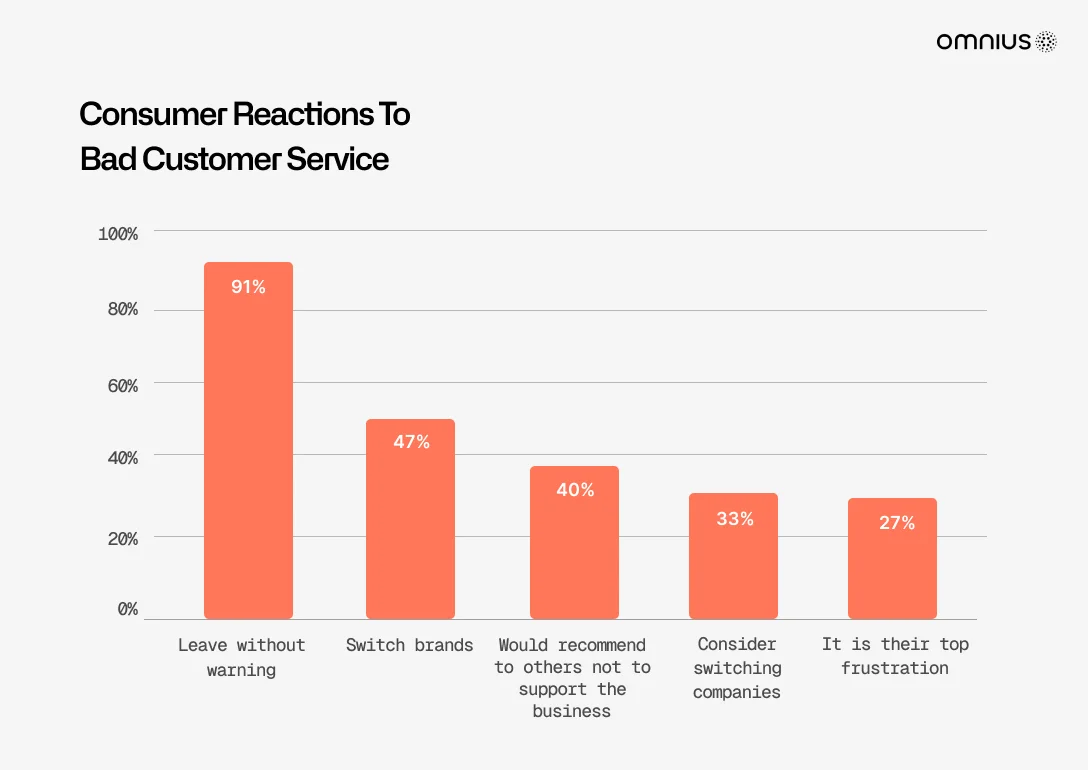
You can use tools like Zendesk or Intercom to track and resolve customer inquiries efficiently.
Additionally, offering resources like an FAQ section or a knowledge base empowers customers to find answers quickly.
Implement a Strong Change Management Strategy
A robust change management strategy helps your team adapt to new situations or tools without disrupting productivity.
Use clear communication plans to inform employees about upcoming changes and provide training sessions or tutorials to help them adjust.
Tools like Zoom can facilitate effective training and feedback sessions.
7. Focus on Long-Term Growth
Short-term goals are essential to keep things moving, but real growth comes from focusing on the bigger picture.
Many marketers sacrifice customer experience for quick wins, but this approach can weaken your business over time.
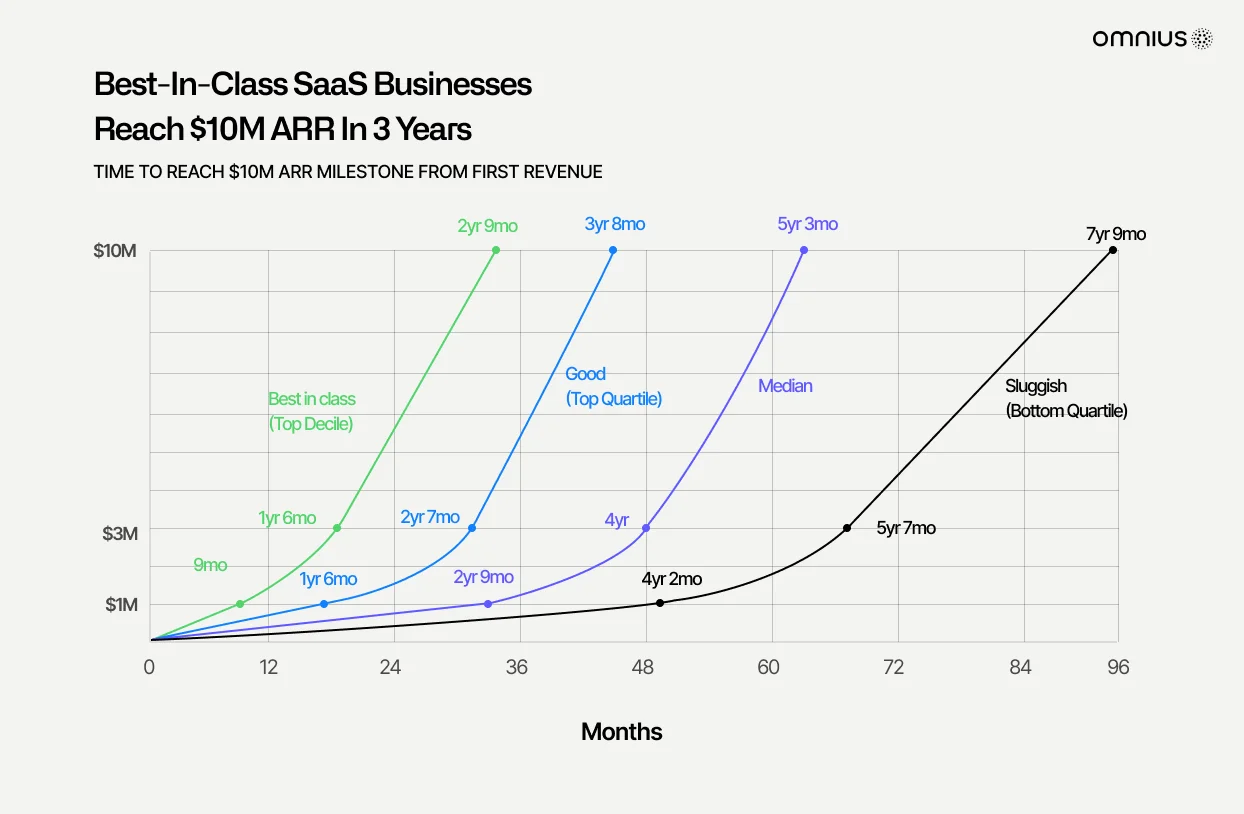
Instead, make delivering a great customer experience your top priority.
A loyal customer base can keep your business afloat, even during tough times, and is more likely to spend 67% more than new ones.
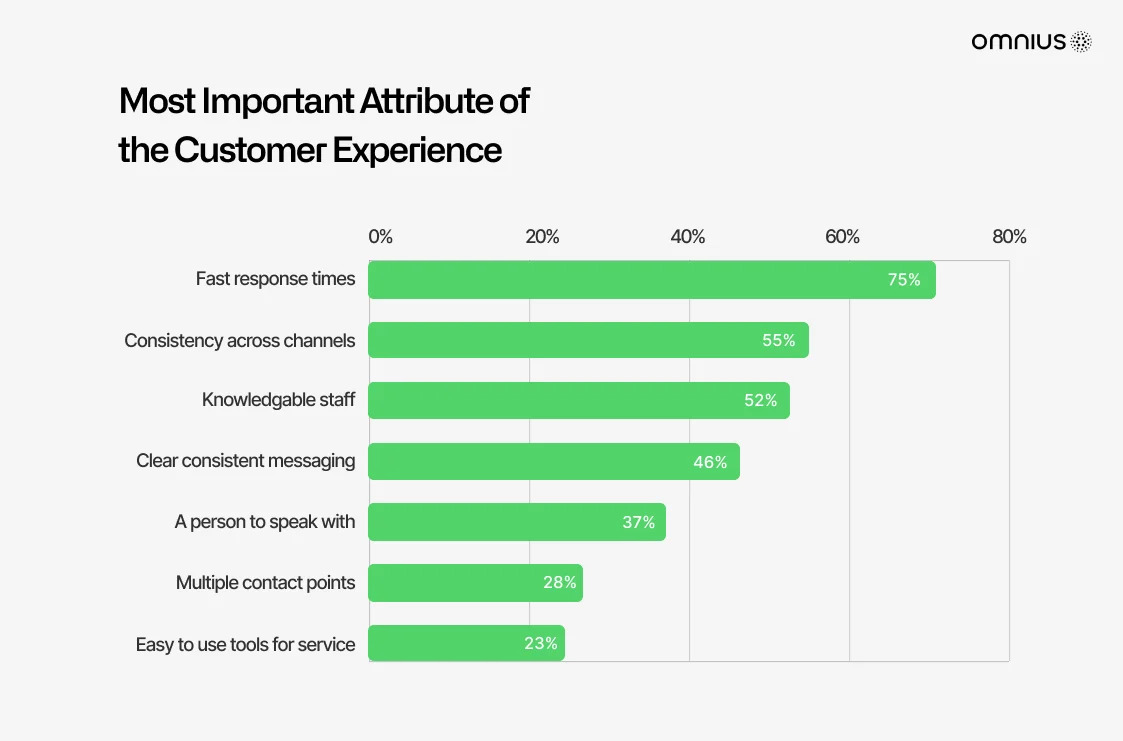
On the other hand, short-term profits without strong customer retention rarely lead to lasting growth.
To achieve this, align your marketing and content strategies with your customers’ future needs. Ask yourself, “What’s next?” and seek ways to enhance the customer experience.
Satisfied customers become loyal advocates, driving growth by staying with your brand and bringing in new customers, creating a cycle of sustainable success.
Conclusion
Now that you know how to create content flywheel, you’re ready to generate consistent, sustainable growth for your brand.
By focusing on high-quality content, strategically repurposing assets, and leveraging data-driven insights, you can create a system that amplifies your reach and keeps your audience engaged.
Remember, the content flywheel is a long-term commitment to creating value and building momentum over time.
If you need assistance on this journey, Omnius is here to help.
Schedule a 30-minute call today to learn how to create a content strategy that drives results and helps you scale your business.
Nguồn: omnius.so
